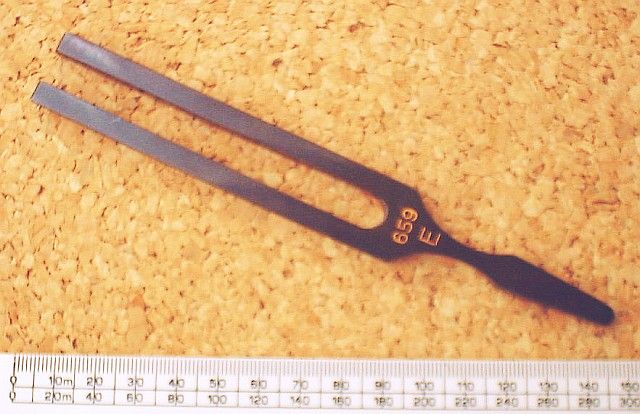10.1 Introduction
|
Previous
End of chapter exercises
|
Next
10.2 Speed of sound
|
Chapter 10: Sound
10.1 Introduction (ESACX)
Have you ever thought about how amazing your sense of hearing is? It is actually pretty remarkable that we can hear the huge range of sounds and determine direction so quickly. How does something actually make a sound that you can hear? Anything that generates a disturbance in the air creates a pulse that travels away from the place where is was created. If this pulse enters your ear it can cause your ear drum to vibrate which is how you hear. If the source of the pulse creates a train of pulses then the disturbance is a wave.
We generally say that sound is a wave. Sound waves are longitudinal, pressure waves, that means that the waves consists of compressions and rarefactions of the pressure of the air.
Sound waves (ESACY)
A tuning fork is an instrument used by musicians to create sound waves of a specific frequency. They are often used to tune musical instruments.
Sound waves coming from a tuning fork are caused by the vibrations of the tuning fork which push against the air particles in front of it. As the air particles are pushed together a compression is formed. The particles behind the compression move further apart causing a rarefaction. As the particles continue to push against each other, the sound wave travels through the air. Due to this motion of the particles, there is a constant variation in the pressure in the air. Sound waves are therefore pressure waves. This means that in media where the particles are closer together, sound waves will travel faster.
Tuning fork

Sound waves travel faster through liquids, like water, than through the air because water is denser than air (the particles are closer together). Sound waves travel faster in solids than in liquids.

Figure 10.1: Sound waves are pressure waves and need a medium through which to travel.
A sound wave is a pressure wave. This means that regions of high pressure (compressions) and low pressure (rarefactions) are created as the sound source vibrates. These compressions and rarefactions arise because the source vibrates longitudinally and the longitudinal motion of air produces pressure fluctuations.
Build your own telephone
Have you ever wondered if you can actually use tin cans or cups to make a telephone? Try it and see!
What you need:
-
Two tin cans or paper paper cups
-
String
-
Toothpicks or small sticks
Try This:
-
Tie a toothpick on each end of a length of string.
-
Make a hole in the base of the can or cup. Poke the toothpick through the end of the can. Pull the string tight so the toothpick rests on the inside bottom of the can. Put one can at each end of the string. (You may want to experiment with different cans or cups and strings or wires to see what works best.)
-
Hold the string tight and talk into one of the cans. The person at the other end should be able to hear you. Why does the string have to be tight?
-
Try to make a party line by tying a third string and can or cup onto the middle of the string. Can everybody talk to everybody else?
Sound waves need something to travel through. Usually they travel through air, but they can travel much faster and farther through a string. The string has to be tight or else the sound wave cannot travel through it. The cup helps to amplify the sound on the other end.
|
Previous
End of chapter exercises
|
Table of Contents |
Next
10.2 Speed of sound
|
